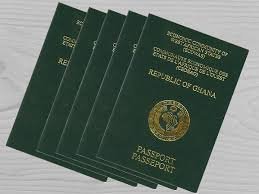Libyan authorities have deported 80 Nigerian migrants held in various detention centres across the country. This action is part of ongoing efforts to curb irregular migration and decongest holding facilities.
The Department for Combating Illegal Migration (DCIM) coordinated the repatriation exercise through Mitiga International Airport on Wednesday. They worked in collaboration with the Nigerian Consulate in Tripoli.
According to Migrant Rescue Watch, a group monitoring migrant welfare and human rights in Libya, the deportation followed judicial directives issued by the Libyan Judicial Police.
Also Read:
- 600 Niger Nationals Deported From Libya in Largest Single Deportation Ever
- Greece to Deploy Naval Vessels Off Libyan Coast to Combat Migrant Crossings Into Europe
- What is Happening in North Africa? Nearly 9,000 Dead in Libya and Morocco
- These Italian regions are offering people €25,000 to come live there
In a statement posted on X on Wednesday, the organisation said, “Judicial Police Dept. on orders of Public Prosecutor’s Office transferred a group of undocumented migrant females of Nigerian nationality to DCIM custody in Tripoli. All females were served with a judicial deportation order and are awaiting deportation.”
It added that the latest batch of returnees included migrants previously transferred under judicial orders.
The development comes amid renewed efforts by Libyan authorities, in partnership with diplomatic missions, to regulate the presence of undocumented migrants and address concerns over overcrowding and human rights conditions in detention facilities.
Undocumented Migrants Libya Route
Libya acts as a major transit hub for migrants from Sub‑Saharan Africa (and beyond) aiming to reach Europe. Migrants often travel through deserts or over land to reach Libya. They then attempt to cross the Mediterranean Sea toward Europe from Libyan ports/coasts, often targeting Italy.
Along the way they may be smuggled by criminal networks. They also face detention, deportation, and exploitation. For example: “Most of them entered Libya facilitated by human traffickers, with the intention of illegally traveling to Europe via the sea route.
























